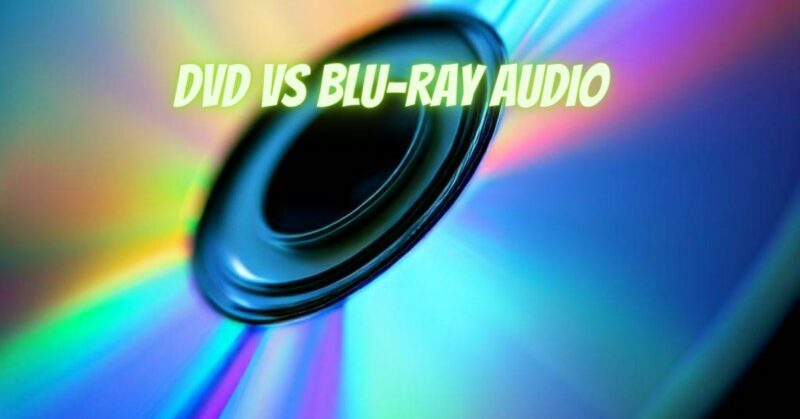When it comes to enjoying high-quality audio and video content, DVD and Blu-ray are two popular formats that offer distinct features. While both formats provide audio playback, Blu-ray has emerged as the preferred choice for audio enthusiasts seeking superior sound quality. In this article, we will delve into the differences between DVD and Blu-ray audio to help you understand their capabilities and make an informed decision about which format suits your preferences.
- Audio Quality: One of the primary differences between DVD and Blu-ray audio lies in their respective audio quality. DVDs typically offer audio in formats like Dolby Digital or DTS, which provide a decent audio experience for most viewers. However, Blu-ray audio takes it a step further by supporting lossless audio formats like Dolby TrueHD and DTS-HD Master Audio. These formats provide uncompressed audio, preserving the original studio recording quality and delivering superior fidelity, dynamic range, and detail.
- Bitrate and Channel Support: Blu-ray audio has a higher bitrate compared to DVDs. DVDs typically offer audio bitrates of up to 448 kbps, while Blu-ray can support much higher bitrates, often exceeding 6 Mbps. This higher bitrate allows for more audio data to be encoded, resulting in better sound reproduction. Additionally, Blu-ray supports a wider range of audio channels, including 7.1 surround sound, allowing for a more immersive audio experience.
- Audio Format Compatibility: DVDs primarily support compressed audio formats like Dolby Digital and DTS, which can deliver decent audio quality with efficient compression. On the other hand, Blu-ray supports a wide range of audio formats, including lossless formats like Dolby TrueHD and DTS-HD Master Audio, as well as uncompressed PCM (Pulse Code Modulation) audio. This format compatibility gives Blu-ray the advantage when it comes to delivering high-quality audio without compromising on fidelity.
- Audio Extras and Bonus Features: Blu-ray discs often come with additional audio features and bonus content, such as director’s commentary tracks, behind-the-scenes interviews, and immersive sound mixing demonstrations. These extras further enhance the audio experience and provide valuable insights into the creative process behind the production. DVDs may also offer some bonus features, but they are typically more limited compared to Blu-ray.
- Player and Equipment Compatibility: To enjoy Blu-ray audio, you will need a Blu-ray player capable of decoding the high-resolution audio formats. Additionally, you’ll need an audio system that supports the necessary audio decoding and playback capabilities, including a receiver or soundbar with HDMI inputs and support for advanced audio formats. DVD players and audio systems are generally more ubiquitous and compatible, making DVDs more accessible for a broader range of setups.
| Feature | DVD | Blu-ray |
|---|---|---|
| Storage capacity | 4.7 GB | 128 GB |
| Audio formats | Dolby Digital, DTS Digital Surround | Dolby TrueHD, Dolby Digital Plus, DTS-HD Master Audio |
| Sampling rate | Up to 48 kHz | Up to 192 kHz |
| Bit depth | Up to 16 bits | Up to 24 bits |
| Audio quality | Good | Excellent |
Conclusion:
While DVDs offer decent audio quality for casual viewers, Blu-ray audio sets a higher standard for audio enthusiasts seeking superior sound fidelity and immersive experiences. With support for lossless and uncompressed audio formats, higher bitrates, and compatibility with advanced audio channels, Blu-ray delivers a more immersive and detailed audio experience. However, it’s important to consider player compatibility and equipment requirements when choosing between DVD and Blu-ray, as Blu-ray requires specific hardware to fully appreciate its audio capabilities. Ultimately, the choice between DVD and Blu-ray audio depends on your audio preferences, equipment setup, and willingness to invest in a higher-quality audio experience.


